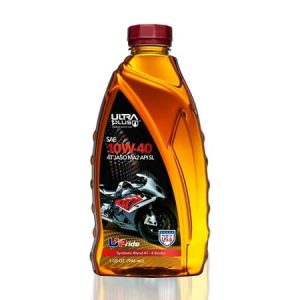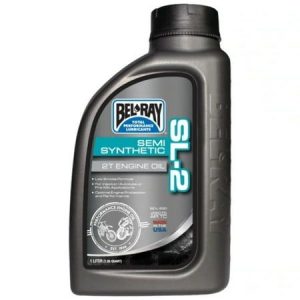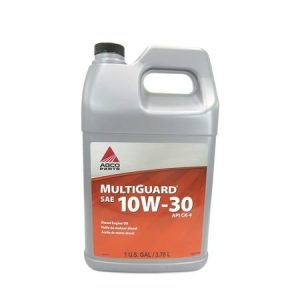Your motorcycle is a machine of freedom and exhilaration, transporting you down winding roads and open highways. But like any machine, it requires proper maintenance to function optimally and deliver a safe, enjoyable riding experience. Regular oil changes are a crucial aspect of motorcycle maintenance, ensuring your engine remains lubricated, protected, and running smoothly. However, navigating the world of motorcycle oil change intervals can be confusing. This comprehensive guide answers the age-old question: how often should you change your motorcycle oil?
Understanding the Role of Oil in Your Motorcycle Engine
Engine oil plays a critical role in your motorcycle’s performance and longevity. Here’s a breakdown of its key functions:

- Lubrication: Oil creates a slippery film between moving engine parts, reducing friction and wear and tear. This minimizes heat generation and ensures smooth operation.
- Cooling: As the engine runs, it generates heat. Oil absorbs and circulates this heat, transferring it to the engine’s cooling system for dissipation.
- Cleaning: Oil traps dirt, debris, and metal shavings produced by engine wear. These contaminants are suspended in the oil and filtered out by the oil filter, preventing them from harming internal engine components.
- Corrosion Protection: Oil forms a protective layer on engine parts, reducing corrosion caused by moisture and acidic byproducts of combustion.
Without regular oil changes, the oil deteriorates and loses its ability to perform these essential functions. Friction increases, leading to premature engine wear. Contaminants accumulate, potentially causing sludge buildup and internal damage. Ultimately, neglecting oil changes can lead to costly engine repairs or even complete engine failure.
The Oil Change Interval Equation: Considering Mileage and More
So, how often should you change your motorcycle oil? There’s no one-size-fits-all answer. Several factors influence the ideal oil change interval for your motorcycle:

-
Manufacturer Recommendations: Your motorcycle’s owner’s manual is the most reliable source for oil change intervals. Manufacturers factor in the specific engine design, oil capacity, and typical riding conditions when establishing recommended service intervals. Consult your owner’s manual for the recommended oil type and mileage between oil changes.
-
Oil Type: Motorcycle oils come in various grades, such as conventional, synthetic, and semi-synthetic blends. Synthetic oils generally offer superior performance and longer protection intervals compared to conventional oils. The oil type you use will influence how often you need to change it. Refer to your owner’s manual for the recommended oil type for your motorcycle.
-
Riding Conditions: Severe riding conditions, such as frequent stop-and-go traffic, short trips, extreme hot or cold weather, and off-road riding, place additional stress on your engine oil. These conditions accelerate oil breakdown and necessitate more frequent oil changes. If you primarily engage in such riding, consider reducing the oil change interval recommended in your owner’s manual by 25-50%.
-
Riding Frequency: Even if you don’t put on many miles, motorcycle oil deteriorates over time. If you only ride your motorcycle occasionally, consider changing the oil at least once a year, regardless of the mileage accumulated. This ensures the oil retains its protective properties and doesn’t become acidic due to storage.
By considering these factors, you can establish a personalized oil change interval that optimizes engine protection and performance for your riding habits and conditions.
Beyond the Manual: Warning Signs That Your Motorcycle Needs an Oil Change
While following your owner’s manual and recommended oil change intervals is a good starting point, there are situations where your motorcycle might be telling you it needs an oil change sooner:

-
Black or Dirty Oil: Clean oil is typically light amber or gold in color. If your oil appears dark brown or black, it’s likely dirty and saturated with contaminants. This indicates it’s time for an oil change.
-
Metallic Particles in the Oil: Visible metal shavings in your oil are a cause for concern. These indicate excessive engine wear, and an oil change alone might not be sufficient. Consult a mechanic to diagnose the source of the metal particles.
-
Burning Oil Smell: A noticeable burning oil smell can indicate worn piston rings or valve seals, causing oil to leak into the combustion chamber and burn. An oil change might help temporarily, but further inspection by a mechanic is recommended.
-
Decreased Engine Performance: If your motorcycle is experiencing a loss of power, sluggish acceleration, or unusual engine noises, it could be due to degraded oil failing to lubricate properly. An oil change might be necessary to restore performance.
-
Difficult Gear Changes: If your motorcycle’s gears become difficult to shift, it could be a symptom of dirty oil affecting clutch operation. While an oil change might address the issue, it’s also advisable to check the clutch cable or hydraulic system for proper adjustment.
If you experience any of these warning signs, don’t hesitate to schedule an oil change or consult a qualified motorcycle mechanic for further diagnosis and potential repairs.
DIY or Pro? The Advantages and Disadvantages of Changing Your Oil Yourself
Motorcycle oil changes can be a rewarding DIY project, allowing you to gain a deeper understanding of your machine and save on maintenance costs. However, it’s not for everyone. Here’s a breakdown of the pros and cons of DIY oil changes:
Advantages of DIY Oil Changes:
-
Cost Savings: Performing your own oil change can be significantly cheaper than taking your motorcycle to a shop. You’ll only pay for the oil, filter, and any necessary tools.
-
Convenience: You can change your oil on your own schedule, avoiding dealership wait times and service appointments.
-
Mechanical Knowledge: DIY oil changes provide a hands-on learning experience, helping you understand your motorcycle’s basic maintenance needs.
Disadvantages of DIY Oil Changes:
-
Technical Expertise: While not overly complex, oil changes require some mechanical knowledge and the ability to follow instructions carefully. Improper procedures can lead to oil leaks, stripped threads, or environmental hazards from improperly disposed of oil.
-
Tools and Equipment: You’ll need a set of wrenches, an oil filter wrench, an oil drain pan, and a funnel to perform an oil change. These tools represent an upfront investment.
-
Safe Disposal of Used Oil: Used motorcycle oil is a hazardous waste and must be disposed of responsibly. You’ll need to locate a designated oil recycling center or dealership that accepts used oil.
-
Time Commitment: While not an extensive process, changing your motorcycle oil takes time and effort. Factor this in when deciding if DIY is the right choice for you.
If you’re comfortable working on your motorcycle and have the necessary tools, DIY oil changes can be a cost-effective way to maintain your machine. However, if you’re unsure about your mechanical abilities or lack the proper tools and workspace, it’s best to entrust the job to a qualified mechanic.
Geared Up for Smooth Riding: Essential Tools and Supplies for Oil Changes
If you’ve decided to tackle DIY motorcycle oil changes, here’s a list of essential tools and supplies you’ll need:

-
Motorcycle Owner’s Manual: Refer to your manual for specific oil change instructions and recommended oil type and filter for your motorcycle model.
-
Motorcycle Oil: Choose the recommended oil type and grade specified in your owner’s manual. Consider synthetic oil for extended protection intervals, especially if your riding conditions are severe.
-
Oil Filter: Use a high-quality oil filter specifically designed for your motorcycle model. Avoid generic filters that might not provide proper fit or filtration efficiency.
-
Socket Wrench Set: A basic socket wrench set will equip you with the tools needed to remove the drain plug and filter housing. Ensure the socket sizes match the fittings on your motorcycle.
-
Oil Filter Wrench: Oil filter wrenches come in various styles (e.g., strap wrench, cap wrench). Choose one that provides a good grip on the oil filter for easy removal.
-
Oil Drain Pan: A designated oil drain pan with sufficient capacity to catch all the used oil is essential. Look for a pan with a spout for easy pouring during disposal.
-
Funnel: A funnel helps channel the new oil cleanly into the engine’s oil fill hole, minimizing spills and messes.
-
Shop Towels or Rags: Rags are handy for wiping up spills, cleaning the oil filter mounting area, and keeping your workspace clean.
-
Safety Glasses: Wearing safety glasses protects your eyes from splashes of hot oil or cleaning chemicals.
-
Gloves: Latex or nitrile gloves protect your hands from oil and grime during the oil change process.

By gathering these tools and supplies, you’ll be well-equipped to perform safe and effective motorcycle oil changes at home.
Invest in Your Ride: The Importance of Regular Oil Changes
Regular oil changes are a fundamental aspect of preventative motorcycle maintenance. Fresh oil protects your engine from wear and tear, optimizes performance, and extends the lifespan of your motorcycle. By following the recommended oil change intervals and using high-quality oil, you’ll ensure your motorcycle runs smoothly, safely, and delivers countless miles of riding enjoyment.